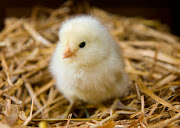Classroom Embryology! - Nov 17th
The month's of October and November have been pretty exciting! I have had the pleasure of partnering with a class of Pomona Elementary 3rd graders to explore the world of chicken hatching! For the last 21 days, these kids have been learning all about chicken development from start to finish. Even more exciting; the teacher was able to use our embryology program materials and incubator to raise about 20 eggs in the classroom!
 |
 |
 |
| Pipping out! |
As chicks near their hatching date, a couple things start happening. First off, you might start hearing little peeps from the eggs, some eggs might start shaking slightly or even rolling around softly. As a chick begins its break out, it has specialized "Egg Teeth" on its beak that help with "Pipping" out of the egg. Pipping is the initial crack in the egg shell as seen above. These egg teeth break off shortly after 'birth'.
 |
| Five New Chicks! |
Eventually, we were able to get 5 newborns in class! The other eggs are in transition and have at least 1 more day to hatch before we consider them non-viable (They won't live). These five chicks seems very health. They will spend about 24 hours in the incubator before being transferred to a brooder box. Once big enough to survive out of the box, these chicks will enjoy life on the farm as laying hens or father roosters.
This program and many others are available for anyone to check out and use! We encourage you to check out our additional kit resources and give me a call at 970-249-3935 if the Chicken Embryology program is something you would like to replicate in your classroom or home school program!
A HUGE thank you to Pomona Elementary School and 3rd Grade Teacher Lisa Franks for allowing us to bring this fun program into the school again! (And for the disruptions that hatching always causes around the school!)
Another huge Thank You to the Delta branch of Foster Farms for donating the fertilized eggs to this program!
Check out our STEM/k12 Programs - TRA Extension facebook page to watch the videos we live streamed during the hatching process!




Comments
Post a Comment